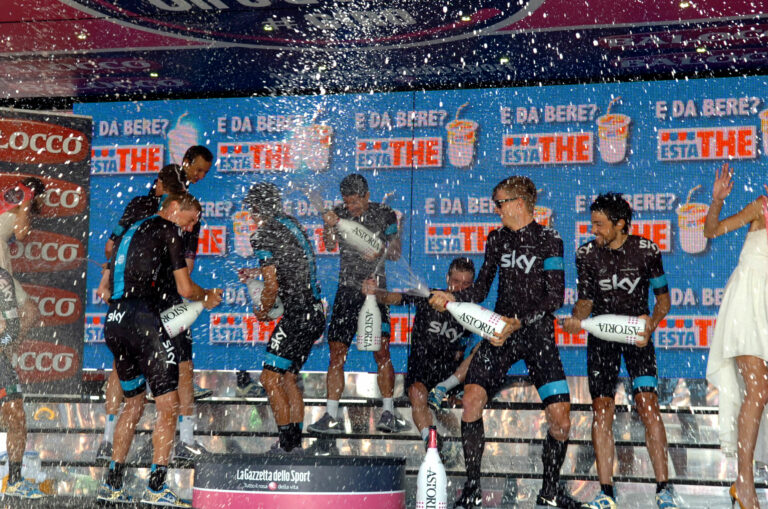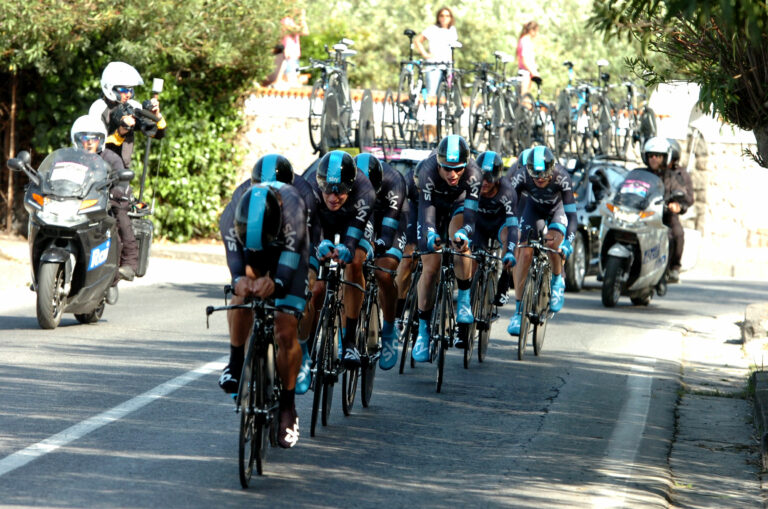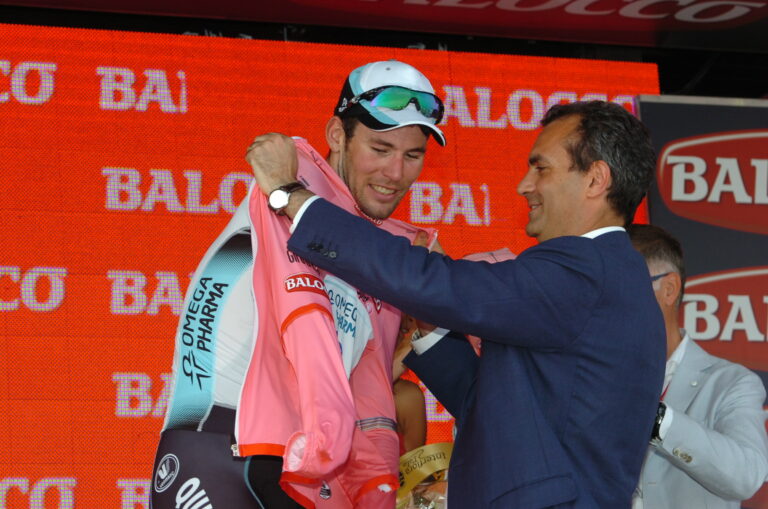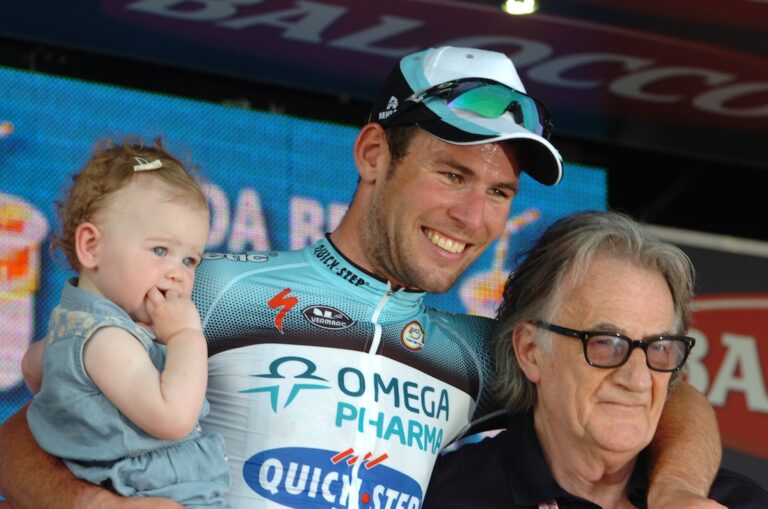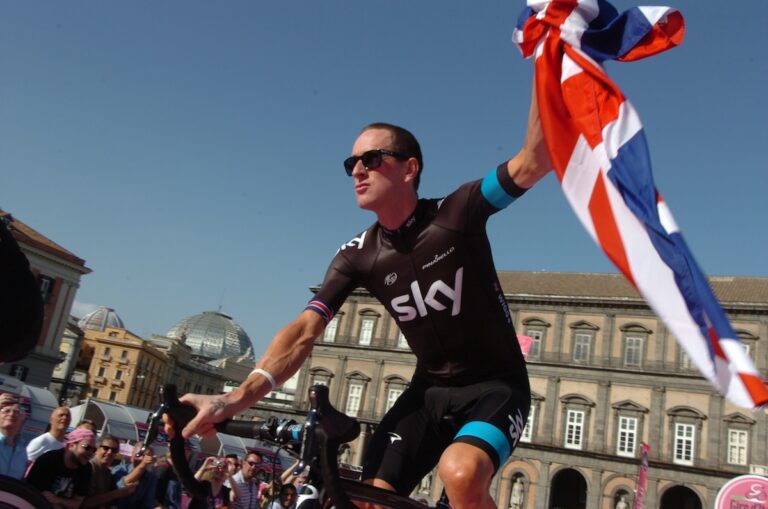Few of us can imagine what it’s like to fight out a tactical battle with Fabian Cancellara in the famous velodrome at Roubaix.
One man who can, and who ended the encounter successfully, lifting the cobbled trophy while Spartacus looked on in a direct reversal of yesterday’s result, is Magnus Backstedt.
The Swede, winner of the Queen of the Classics in 2004, entered the velodrome with Cancellara, Tristan Hoffman, and Roger Hammond after 260km of racing.
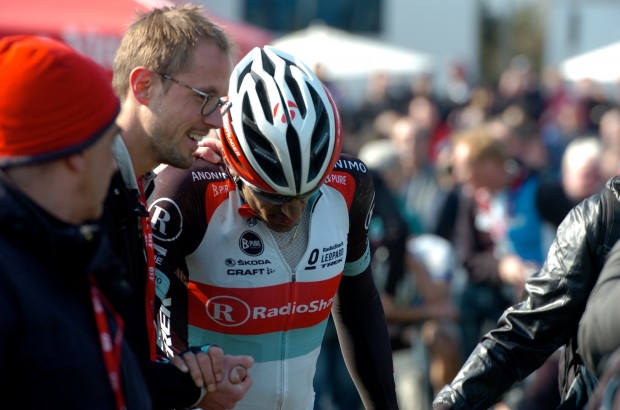
“It was one of those weird experiences when I knew there were loads of people around,” Backstedt recalls. “The whole stadium was just packed with people but I couldn’t hear a single thing. I was completely numb to anything, as I was so focused on the task.
“I don’t remember an awful lot about the sprint itself. I know Roger Hammond boxed me in as we came into the back straight of the velodrome and I just thought, that’s fine because he’ll end up drifting wide at the exit of the corner, so I just waited. That’s pretty much all I thought.”
Backstedt describes crossing the line as a massive relief, but one hard to explain. “It will be 2020 by the time I can get the exact feeling across to you in words,” he says.
“It’s virtually impossible when you’ve dreamt about doing something and you’ve worked hard for so many years, especially when I had injuries and illnesses thrown at me in the meantime, so to finally get there and pull it off is just awesome.”
Victory in a race of the magnitude of Paris-Roubaix can be career changing. For Cancellara, already twice a winner of l’enfer du Nord, and with numerous Monument Classics victories on his palmares, this latest triumph will only cement his place in the history books.
For Backstedt, eight years in to his career and having made his mark some six years earlier with a stage victory in the 1998 Tour de France, victory at Roubaix in 2004 was confirmation that his ability to compete at the highest level remained intact after a series of injuries.
Any cyclist who watched yesterday’s race will have done so with admiration of the ability and sheer resilience of those taking part as they smashed their way across some 27 cobbled secteurs. Most, however, will never have experienced a ride quite as brutal.
“It is incredibly harsh on your body,” says Backstedt. “The vibrations you go through and that you get hit with, are just phenomenal, borderline bone-breaking.
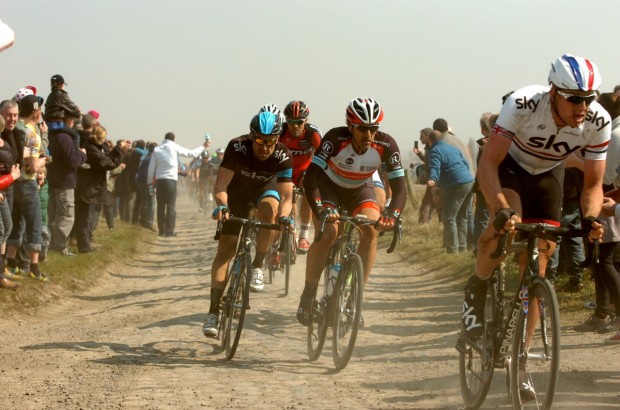
“After finishing the Paris-Roubaix you’ve got tendinitis in your arms, fingers, shoulder and neck. The part which actually hurts the least is your legs, that’s how it was for me anyway, but I know other guys who have had it different. One thing’s for sure you are properly beaten up by the finish.”
The Swede is one of many of an elite breed to have contested the race (and a still rarer species who have raised the cobbled trophy) to attest to the power of an almost terminal velocity to lessen the punishment. Fast is good.
“The funny thing is there’s a cut-off point in terms of speed, when if you ride above that speed you kind of skim across the surface of the stones more, which obviously hurts a lot less and doesn’t shake you about as much.
“The moment you drop below that critical speed, all of a sudden everything bounces a lot more, it hurts a lot more and gradually you get slower and slower, and there’s only so long you can hold for when that starts happening. It’s an interesting experience to say the least,” he says.
The 2013 race witnessed few crashes. It has not always been thus. Philippe Gaumont’s crash on the Trouée d’Arenberg in 2001 ended in sickening fashion with a broken femur for the Frenchman. Stijn Vandenbergh (Omega Pharma-QuickStep) went down hard on the Carrefour de l’Arbre yesterday, but mercifully was able to recover and continue the race. Backstedt has little truck with those who describe Paris-Roubaix as too dangerous. “If you can’t stand the heat, get out the kitchen,” he says.
“That’s always been my view of that race. If you’re not aware of the risks when you stand on the start line I think you’re in the wrong place. It is a dangerous race, there’s no question about it. It’s probably one of the most dangerous races, but at the end of the day when a race has got the nickname the ‘Hell of the North’ you expect it to be dangerous.”
The greatest danger occurs not on the cobbles but on the entrance to them, where, Backstedt says, riders take greater risks than in any Tour de France sprint. He singles out the approach to the first cobbled section and to the Trouée d’Arenberg, where riders are desperate to position themselves among the first ten.
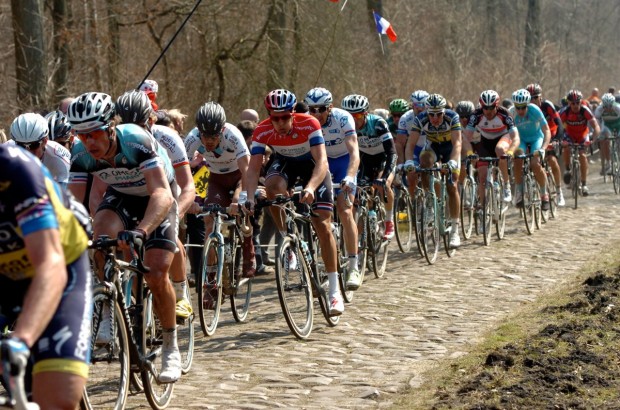
In the case of the latter, the desperation of the riders stems from its reputation as the defining sector of the race. Backstedt almost agrees. “I’d say the [Arenberg] forest is the place where you can lose the race, rather than where you win it,” he says.
“Usually the peloton splits into two, maybe three groups, and you need to be in the front; if not [there] then definitely in the second to have an outside chance, but really you need to be in the first group to sit comfortably.
“However the first year I rode it, I was in the second group, 35 seconds of the front and managed to get back in there and finished seventh. So you can ride it from that position, but you hit that forest in the wrong position or you crash, your race is over.”
The mechanics were hard at work before yesterday’s race, as illustrated by this magnificent gallery from Balint Hamvas. Numerous set-up tweaks are deployed to try and soften the relentless pounding from the cobbles, but for Backstedt less was more. He raced an almost identical set-up to victory in Roubaix to the one he had used throughout the season.
“The biggest difference is the size of the tyres,” he says. “You normally ride a 23mm tyre on a standard day of racing. However, I got told off something crazy by my mechanic and by all my teammates for riding 27mm tyres back in 2004 when I won it. Nowadays, I don’t think anyone rides smaller than a 25mm. Most are riding between 27/28mm tyres.”
Juan Antonio Flecha (Vacansoleil-DCM) was among those at the sharp end of yesterday’s race to have made a specialism of riding the cobbles. The most successful in such savage conditions are those who have developed a technique to cope. Opinion is split on the benefits of turning a big gear from the back of the saddle or spinning a high cadence. Backstedt says the approach to the demands is personal.
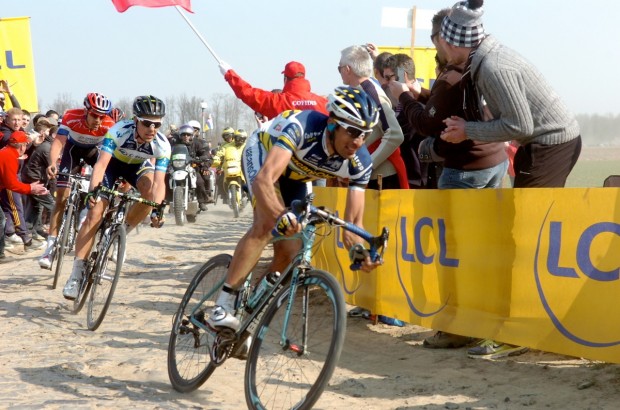
“I think it’s like climbing – it depends on the rider,” he says. “Some like to push a big gear, some like to really spin up the mountain. Cobblestones are exactly the same. They’re very similar in how you ride them: you can rev it like mad, or push a bigger gear. I think it’s just a case of finding what works for you.”
It’s fair to say Cancellara has found a technique to achieve his ends. The Swiss wrapped up his third victory at Roubaix yesterday, and his second Ronde-Roubaix intra-season double. Spartacus is a rare talent, with an equal on the cobbles only in Tom Boonen among the current crop. Tomeke failed to start yesterday’s race after crashing heavily a week earlier at the Ronde Van Vlaanderen. The same was true last year for Cancellara. Fans will hope for an injury-free preparation for both to next year’s northern Classics.


